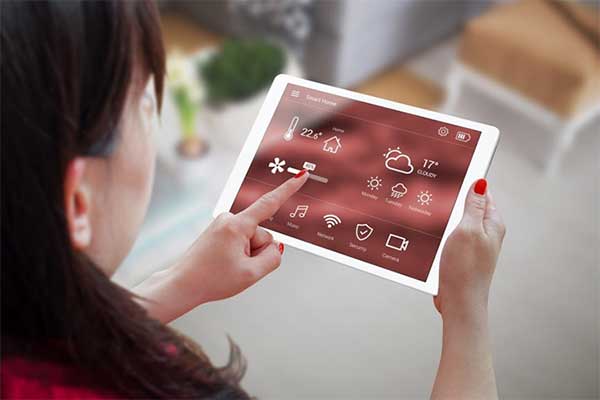Smart thermostats and climate control technologies are revolutionizing the way we manage and regulate temperatures in our homes and offices. These advanced devices not only provide convenience but also offer energy-saving benefits and contribute to a greener environment. In this article, we will explore the features and advantages of smart thermostats and climate control technologies.
1. Remote Access and Control
One of the key features of smart thermostats is their ability to be controlled remotely. Through a smartphone app or a web portal, users can adjust the temperature settings of their thermostats from anywhere in the world. This means that you can turn on the air conditioning or heating before you arrive home, ensuring a comfortable environment upon your arrival. Additionally, remote access allows you to monitor and manage energy usage, helping you to make more informed decisions about your energy consumption.
2. Learning Capabilities
Smart thermostats are equipped with learning capabilities that enable them to adapt to your lifestyle and preferences. These devices use advanced algorithms and machine learning techniques to analyze your patterns and behaviors, creating a personalized temperature schedule. Over time, the thermostat learns when you are typically at home or away and adjusts the temperature accordingly, maximizing energy efficiency without sacrificing comfort.
3. Energy Efficiency
Energy efficiency is a significant advantage of smart thermostats and climate control technologies. By intelligently managing and optimizing temperature settings, these devices can help reduce energy consumption and lower utility bills. With features like occupancy detection, smart thermostats can automatically adjust the temperature when no one is present, saving energy and reducing unnecessary heating or cooling.
4. Integration with Other Smart Home Devices

Smart thermostats can seamlessly integrate with other smart home devices, creating a cohesive and interconnected ecosystem. Integration with devices such as smart lights, motion sensors, and voice assistants allows for enhanced automation and control. For example, when the motion sensors detect that no one is present in a room, the thermostat can automatically adjust the temperature to an energy-saving mode.
5. Environmental Benefits
Adopting smart thermostats and climate control technologies not only benefits homeowners but also has a positive impact on the environment. By reducing energy consumption, these devices help decrease greenhouse gas emissions and contribute to a greener and more sustainable future.
- Smart thermostats reduce energy waste by optimizing temperature settings.
- They promote energy conservation by adjusting the temperature based on occupancy.
- By integrating with other smart home devices, they enhance overall energy efficiency.
Smart thermostats and climate control technologies are transforming the way we manage our indoor environments. With features like remote access, learning capabilities, energy efficiency, and integration with other smart home devices, these devices offer convenience, cost savings, and environmental benefits. Embracing these technologies can lead to a more comfortable and sustainable living or working environment.

